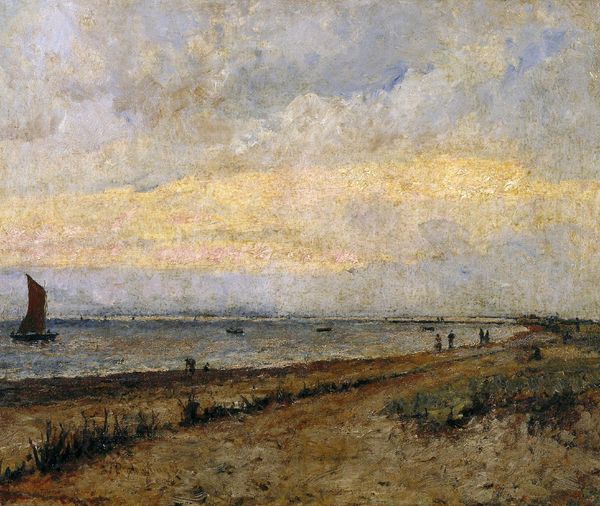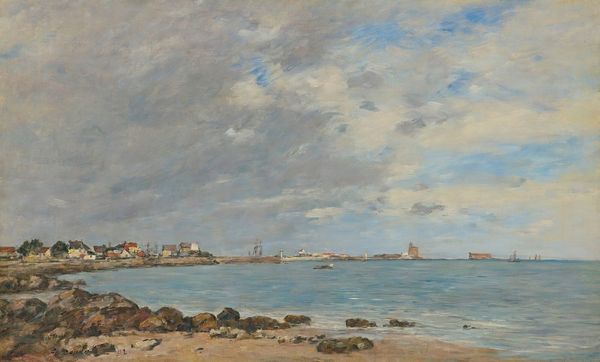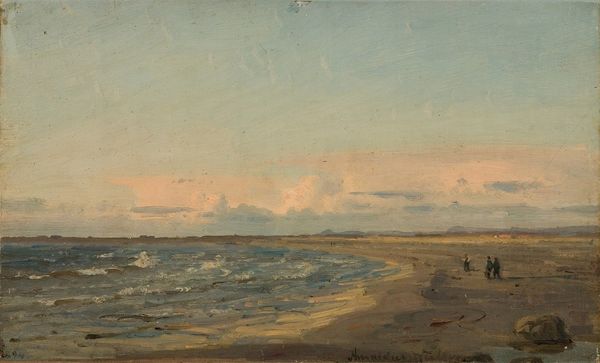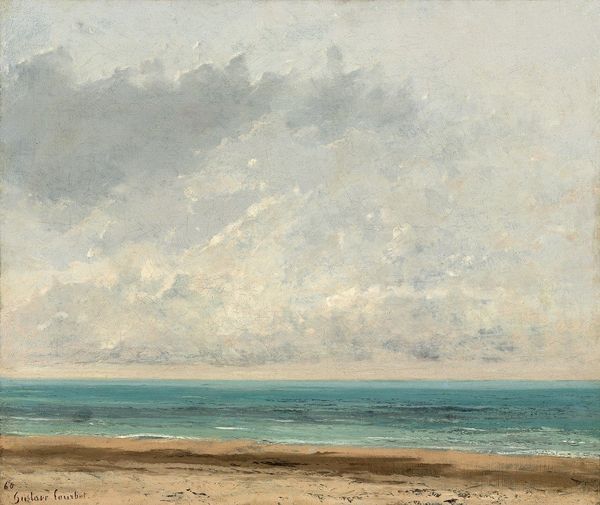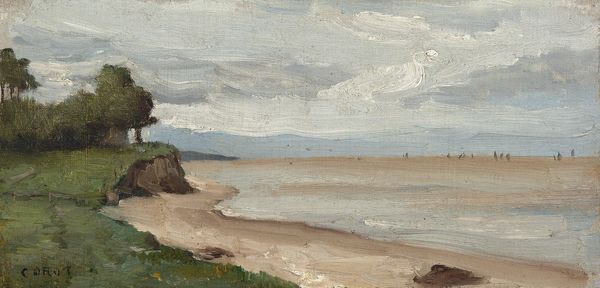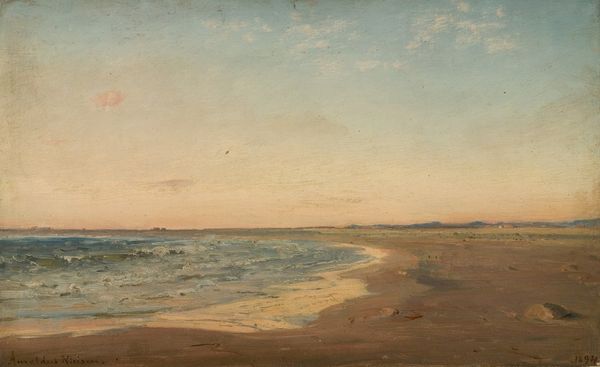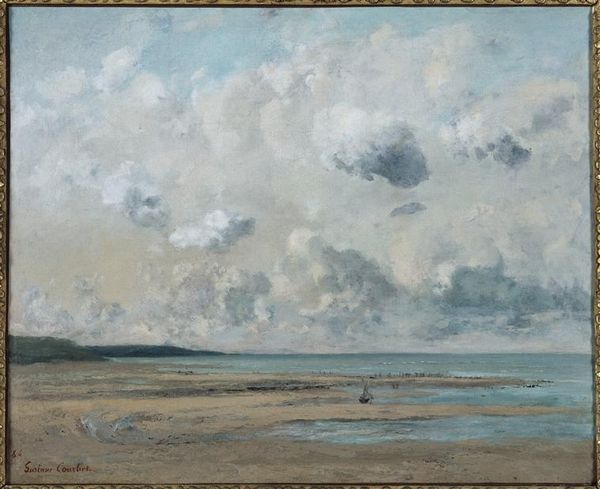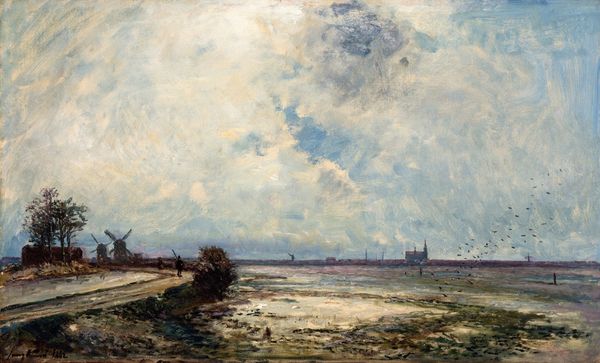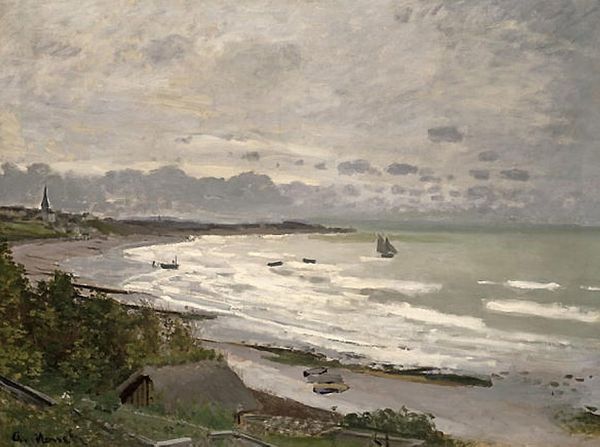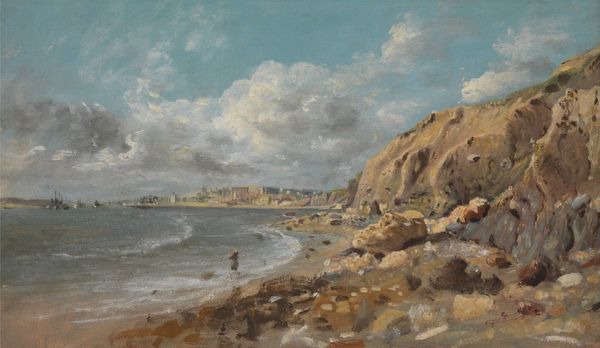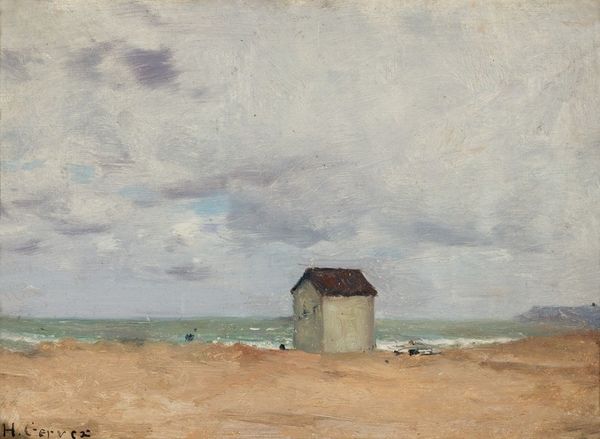
painting, plein-air, oil-paint, impasto
#
water colours
#
painting
#
impressionism
#
plein-air
#
oil-paint
#
landscape
#
oil painting
#
impasto
#
realism
Copyright: Public Domain: Artvee
Editor: This is Eugène Boudin’s "La marée montante," painted in 1888 using oil paints, probably en plein-air. The scene definitely captures the calmness of the seashore. What strikes me is the casual depiction of bourgeois leisure. How would you interpret the social context represented here? Curator: Boudin’s work offers a glimpse into the burgeoning culture of seaside leisure in 19th-century France. Consider the burgeoning middle class and their increasing access to leisure time. Paintings like these, widely exhibited and reproduced, helped popularize the idea of the beach as a desirable destination. What impact do you think such idealized portrayals had on society's perception of class and leisure? Editor: It makes it seem so accessible! I mean, the painting is so relaxed and inviting, anyone would want to visit. Did Boudin's choice of subject matter and style serve any particular political agenda? Curator: While Boudin wasn't overtly political, his commitment to depicting modern life aligns with a broader Realist movement. These works often subtly challenged the art establishment's preference for historical or mythological subjects. By celebrating contemporary scenes, Boudin, in a way, democratized art by focusing on the here and now and highlighting contemporary life. Editor: I see. So, this image isn't just a pretty picture; it is about the democratization of art as well? The way art serves political and social changes… Thank you. That has made me think differently. Curator: Absolutely! Looking at art through this lens encourages us to consider its power to shape perceptions and reflect the changing values of a society. And in this way, the sea also became part of the social dynamics of a new era.
Comments
No comments
Be the first to comment and join the conversation on the ultimate creative platform.
